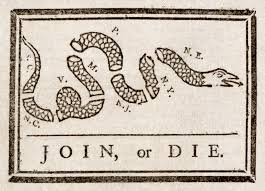Head of Elk, Maryland
The Landing

3:00 am in the moonlight Monday morning of August 25: the Eagle has landed. Aboard the Eagle, a 64-cannon ship-of-the-line, was General William Howe, British Commander-in-Chief.
As the dawn approached, soldiers on the ships began making their way above decks, some seeing daylight for the first time in weeks. They were tight-legged, filthy, and battle rusty.
The problem at hand for Howe was that of landing 265 ships laden with soldiers and ordnance into a narrow river neck.
Contributing to the logistical logjam was the Elk River's shallow and muddy character, which left the heavier frigates and ships-of-the-line farther up river for fear of being stuck in the mud.
In fact, many ships had already become mud-bound during the journey up the Elk, despite the best efforts of mercenary American river pilots who helped the British navigate the unfamiliar waterway. No ships were stuck for long, but it was another complication and delay.
On board the Eagle were Howe's brother, Admiral Richard Howe, and Captain Baurmeister, the officer who orchestrated the movement of the armada's six divisions of ships.




